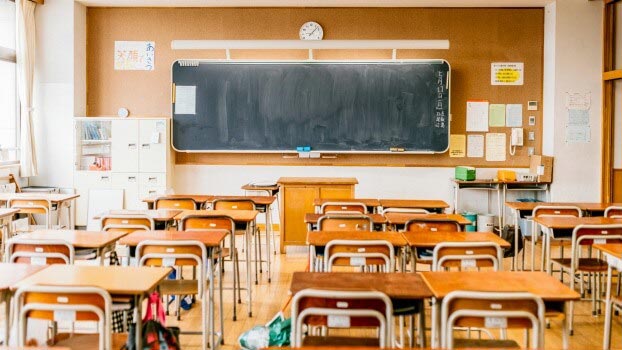Setting Up Your First Classroom

It is that time of year when visions of classroom set-up begin dancing in the heads of teachers throughout the country. Deciding where to put centers, group lesson areas, classroom libraries and more fill many waking hours. And why do teachers worry about planning their classroom? It is because they care about their students' success and know that a well-organized and functional space provides the most conducive atmosphere for learning. For some basic tips and tricks, try the ideas below to get you started.
Setting Up Your Classroom
Plan, Plan and Plan Some More
Before you begin carting in boxes and bags and furniture, plan out where everything will be going in the classroom. Use a classroom mapping guide to figure out where different aspects of learning will take place in the room. Before you can start arranging rectangles and squares on your graph paper, however, you have to decide what you want to include in your classroom. Whether you teach preschool, elementary or intermediate grades, all classrooms will need a few basic things. Plan for a classroom library, an area for students to sit and work (whether that consists of tables or individual desks depends on your classroom furniture and your school's policy), and storage space. By thinking about the needs of the classroom ahead of time, you will be able to transform the classroom from boring to fabulous before the start of the new school year.
Basic Classroom Library
Your classroom library should be a well-organized, comfortable spot for children to sit, read and work. Books can be leveled and placed in appropriately labeled baskets. First Grade Teacher, Caroline G., commented that she color codes the classroom library books with stickers that correspond to the color of the basket that the book belongs in. This helps keep the books organized and allows students to quickly and accurately put materials away. Debbie Diller, educational consultant and author, suggests in her book, Spaces and Places, that teachers refrain from creating an area that begs for students to take a running start into the pile of classroom library pillows. Arrange the library so that it is welcoming, but also not a place with distractions.
Work Space
As tempting as it may be to organize desks first, start by deciding where the rest of the furniture in the room will be placed. If your students use tables instead of desks, work in the same manner and arrange the library space and other desired areas first. Think about the types of work spaces you would like to include in the room, as well. If you teach younger students, floor group time is especially important, so be sure that you leave enough room wherever you want to have your group lessons. When working in small groups, make certain that you have adequate table top space and that you will be able to see the entire classroom at a glance from where you are sitting. Do you have students who need less distractions? Arrange areas that the student can work at, away from his desk, that give him the focus he needs. Above all, make the space as open and clutter-free as possible.
Storage
As daunting as it may be to tame your teaching supplies in a small classroom, have hope, because it can be done. Make use of wall space, chair space and under the table storage in ways that you may not have before. Pocket charts below the white board are great for holding group lesson materials, pointing sticks and other things that you need while at the board. The side of a metal filing cabinet can be transformed into a homework collection station by using a magnetic pocket chart. The backs of student chairs can hold books and papers when chair pockets are put on. And when that out of the way center table has a colorful length of inexpensive fabric hanging down as a table skirt, no one will even know that beneath it lies your mid-year readers, science equipment or unused math manipulatives. Before deciding where to put all of your teaching supplies, first start by evaluating what you have and getting rid of what you do not need. A clutter-free space is much more comfortable to be in and it makes it much easier for children to learn.
Classroom libraries, student work spaces and storage are just a few of the many things you will need to consider when designing your classroom layout. Take the time to start planning now, so that when you are allowed back in your classroom, you will have a plan for what needs to be done.
What are some of your favorite classroom set-up resources?
What is one tip that you would share with other teachers about creating a clutter-free, learning-centered classroom?
Save
Save
Save
Setting Up Your First Classroom
Source: https://blog.reallygoodstuff.com/setting-up-your-classroom/
Posted by: evansclaidecon.blogspot.com

0 Response to "Setting Up Your First Classroom"
Post a Comment